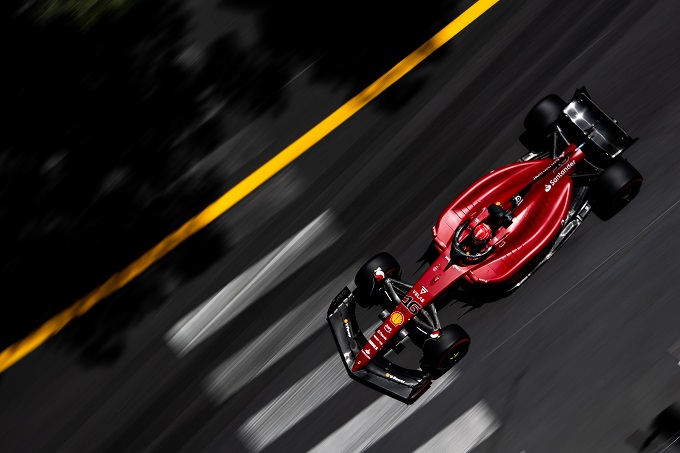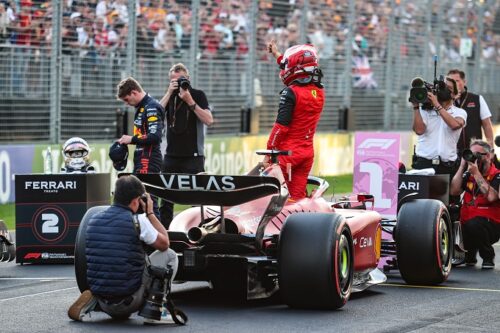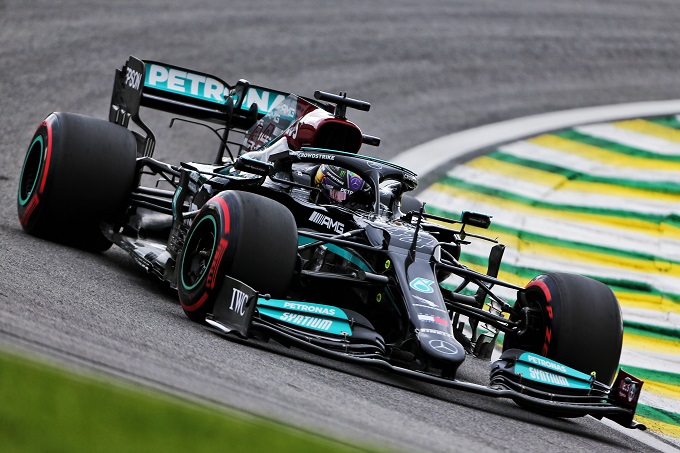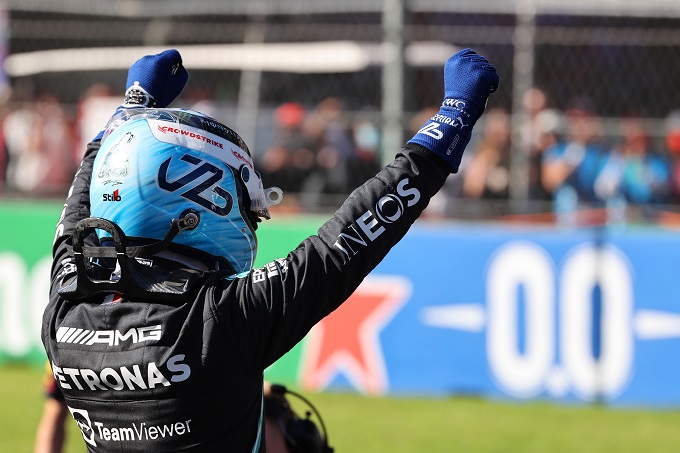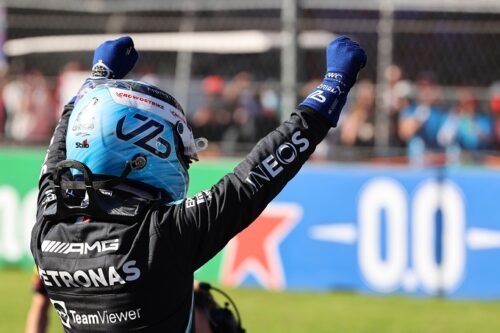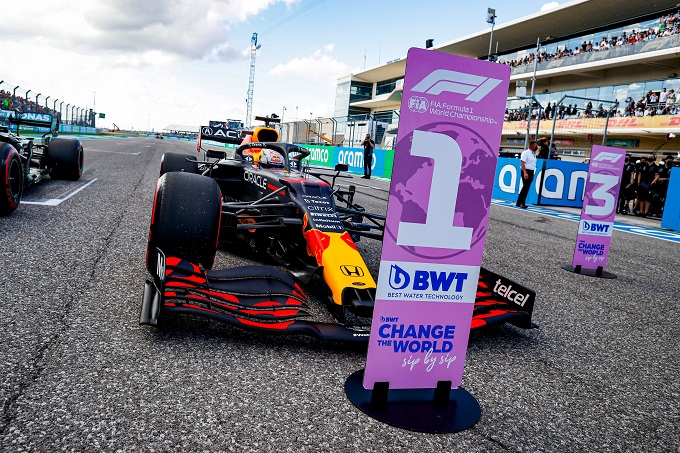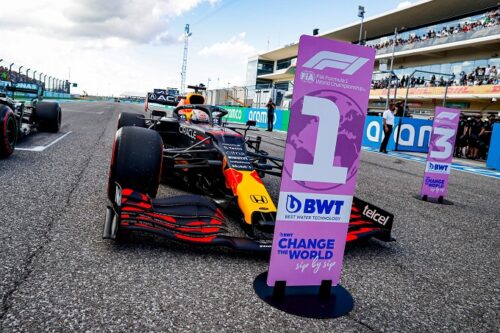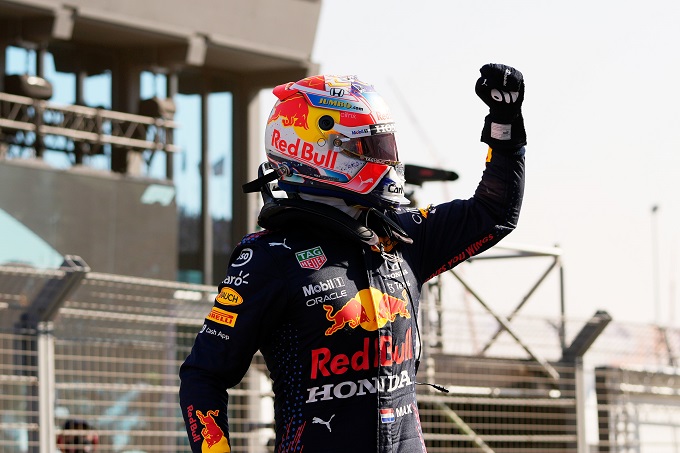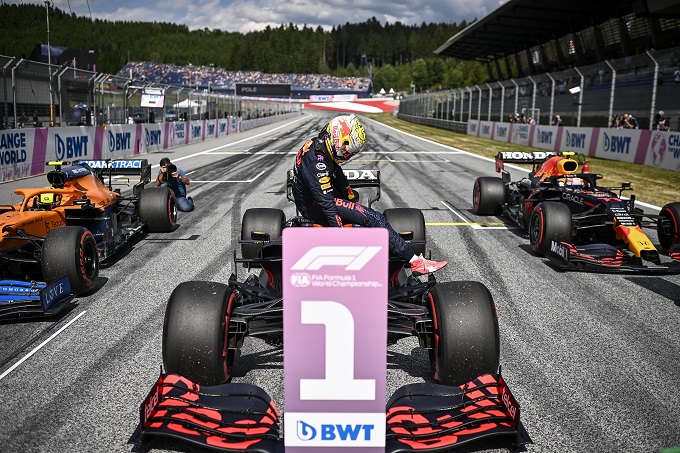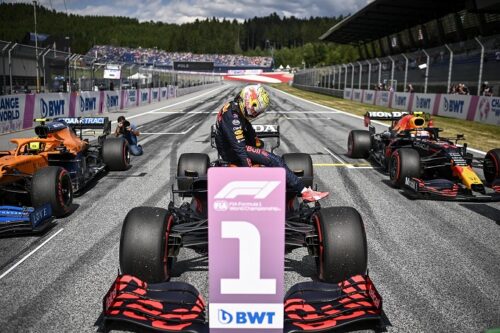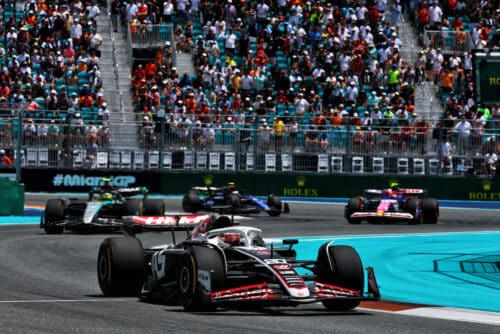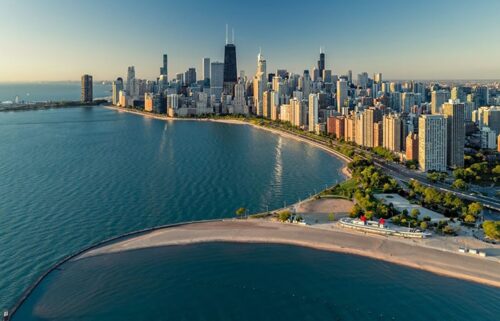F1 | Hungarian GP: analysis of qualifying
Lewis Hamilton takes the third pole position in a full Mercedes front row, Verstappen third

On the circuit that saw him win the greatest number of pole positions during his career, Lewis Hamilton once again imposed his stamp, concluding today's qualifying on the Hungarian track of the Hungaroring in front of everyone. A day in which Mercedes was the master, capable of monopolizing the entire front row, imposing a rather considerable gap on its closest rivals, despite not having managed to improve in the last attempt of Q3, where several drivers had encountered difficulties in lowering the time recorded in the first run. An opportunity that, on a track where it is notoriously difficult to overtake, the Brackley team will have to exploit to take full spoils, in order to close the gap in both world rankings.
“The first lap of Q3 was really beautiful” – explained the Briton in the interviews following qualifying -. “Sometimes it happens that you get your best lap in Q1 or Q2 or something like that. It never always goes to plan, whereas today I did the best lap in Q3, on the first attempt. So I was really, really happy. There was incredible work from the team this weekend. We are trying to make the car progress, with constant development and the guys in the factory have worked at full speed", added the Briton, capable of conquering first position with almost three tenths of an advantage over his teammate despite not having succeeded to improve in the last minutes of the final heat. Valtteri Bottas will start alongside him, a player who could prove fundamental for the Star team's games, especially if the two W12s were to maintain the leading positions even after the first corner, thus reducing Red Bull's chances of being able to play strategy during construction. If the two Mercedes will line up on the grid with medium compound tyres, the same cannot be said for the cars from Milton Keynes, which will start on the softest compound available which, at least in theory, should guarantee a small advantage to the departure in terms of grip.
A decision taken during the red flag which had momentarily interrupted Q2 after the first attempt, which had seen Verstappen just two tenths from the top, with the possibility of using another set of yellow band tires to further improve his time and thus easily remain in the top ten, replicating the same choice made by the Mercedes pit wall for Bottas. Without a doubt there was room to follow this tactic but, on the contrary, the Red Bull strategists had decided to change the cards on the table, switching to the softer compound: with an RB16B which over the course of the weekend had shown fluctuating behavior on the lap dry, especially from the point of view of balance thanks to an annoying understeer, the idea was probably not so much to secure access to Q3, but rather to guarantee a more high-performance tire in the very first laps, which would give the opportunity to attack and make the difference at the start of the race, the best opportunity to beat a W12 in great form. “All weekend so far we were a little behind and qualifying went the same way. On my lap in Q3 I struggled slightly more than in Q2 and I didn't have the same grip for some reason. I don't know if it was related to the track or the tyres, but the car was unbalanced and the corners all follow each other very quickly here, so if you don't feel good in one corner, the next one won't be great either. I lost some time on the final lap, but even with a faster lap and a slightly better balance I don't think we would have been on pole" – explained the Dutchman, who probably expected to finish at least in front of his Finnish rival of the Stella team -. “Third position is not where we want to be and we can't be happy about it, but anyway we are still there with Checo next to me, so we will see what we can do in the race. The softer tire will not last as long as the average one, but perhaps it will help us at the start", added the number 33 of Red Bull, on whose car the Power Unit was also replaced after having found anomalous data at the end of qualifying . Alongside him will be the other RB16B, that of Sergio Perez, who missed the opportunity to improve his time in the last attempt as he crossed the finish line beyond the maximum time limit. Most likely, however, the Mexican would not have been able to improve his position, even if this could have put him safe from the midfield group, only about half a tenth of a second behind.
Opening the third row will be an excellent Pierre Gasly, who has rediscovered the feeling with the car after two fluctuating events like those in Austria and Great Britain, where he was unable to obtain results in line with what he had seen in the rest of the season. Pierre thus returned to occupy a position in the top six again, finding that something extra in terms of sensations during qualifying, as if the spark had been lit in a weekend that, in any case, was proceeding on the right tracks. Being able to position oneself ahead of Ferrari and McLaren, especially on a track that is no longer congenial to the characteristics of the AT02 represents a great satisfaction, in the hope of being able to count on the layout of the track to keep the mid-group rivals behind and gain important points for the constructors' classification: “I'm very happy with my qualification: it's a great feeling to be the first car behind Mercedes and Red Bull. We are a bit surprised to be ahead of Ferrari, who were really strong, so I consider myself really satisfied with our performance. It won't be an easy race for us, some of our rivals have a better race pace, but getting a good starting position today was crucial and we took the best one to be able to fight tomorrow", declared Pierre at the end of qualifying. A duel in the standings that particularly involves McLaren and Ferrari, with Lando Norris sixth and Charles Leclerc seventh. With the three contained in just a few thousandths, any inaccuracy could have made the difference between a position gained and one lost. A weekend that so far has not brought any particular joy to the Maranello team, thanks to the balancing difficulties encountered during free practice, especially in terms of understeer. Despite the high temperatures, in fact, already during Friday's tests it was possible to notice how the SF21 was putting the front tires under stress, generating graning phenomena due to the temperature difference between the external surface of the tire and its core, a phenomenon who had shown up for other appointments albeit in conditions substantially opposite to those found in Hungary. Even more, however, what complicated the Italian team's Saturday was the wind, which was extremely variable in both direction and intensity, often making the behavior of the car unpredictable: “I'm disappointed, because we expected more than a seventh place. Today the most treacherous aspect was not the high temperatures, but the wind which increased in Q2. This put us in difficulty in managing the rear and so we were not able to exploit the potential available. However, the points will be awarded tomorrow and, considering our race pace, I am confident.
What was a positive surprise, however, was Alpine which, in this first part of the season, had not shone on the high load slopes. On the contrary, the A521 proved to be at ease since Friday, but the further step taken during the night between Friday and Saturday in terms of balance made it possible to limit the annoying understeer recorded yesterday, thus allowing the two drivers to gain eighth and ninth position on the starting grid, ahead of Sebastian Vettel's Aston Martin, with the latter doing well in once again reaching the third heat. The German, however, did not hide a hint of bitterness for a lap that did not completely satisfy him, in particular for the difficulties encountered in making the car work as best as possible, a factor probably also linked to the exploitation of the tyres, as found by others drivers: “We struggled a bit to get the tires working for the last lap. I think we could have been ninth but, realistically, tenth position was what we deserved. Yesterday the soft worked quite well, but we still have to see if we can make a single stop strategy work by starting with the softer compound", explained the German, who will be the last to have to start the race with the set using to get the best lap in Q2.
It was Daniel Ricciardo who found bitter disappointment for a few hundredths of a second in the second qualifying heat, once again struggling with a balance of the car that was distant from his driving style, an element which makes it difficult for the Australian to make the most of the characteristics of the MCL35M, in particular when navigating the long bends of the second sector, where a precise front end is needed that does not suffer from understeer, an element that once again sent the driver from Perth into crisis, as demonstrated by his telemetric differences compared to his teammate. At his side will be Lance Stroll, who missed out on Q3 by a few hundredths of a second, due to difficulties very similar to those of the other Aston Martin players, even if this will give the English team the opportunity to diversify the strategy by starting the Canadian on the medium compound. The one who can be satisfied with today's qualifying is Alfa Romeo, capable of once again passing the cut in the first heat with both single-seaters, exactly as happened at Silverstone. On the flying lap, Kimi Raikkonen seemed to have lost his bearings in the first half of the championship, with results that didn't live up to his name; in the latest rounds, however, the Finn seems to have managed to reverse the trend, also positioning himself ahead of his teammate, who during this championship had managed to be more incisive in qualifying. The person who will have to deal with an uphill race will be Carlos Sainz, the protagonist of an accident during the second heat while he was trying to complete his first attempt: approaching the last corner, in fact, the Spaniard had lost the rear of his car, impacting rather violently against the external barriers. An accident with a dynamic seen on several occasions in that area of the track, where you tend to arrive with overheated rear tires due to the corners and the long traction phase that characterizes the beginning of the third sector; when he went to remove a gear to face the insertion, however, the rear axle did not show a lack of grip, making it virtually impossible to avoid the spin. In fact, at the beginning of Q2, the highest asphalt temperatures of the entire qualifying session were also recorded, going well above 60°C. The Ferrari driver also said he was caught by a gust of wind, an extremely plausible eventuality, especially bearing in mind his unfriendly behavior during the session, both in direction and intensity: “It's hard to swallow. This type of accident doesn't happen to me often, and it hurts. After going very fast in the first session, finishing against the wall in Q2 was certainly not ideal. I was closing the lap without pushing too much because it was only the first run, and unfortunately I ran into a strong gust of wind, as I later saw from the data. It's a kind of mistake I haven't made in a long time and obviously I'm very surprised. I immediately went to our garage to see what had happened to the data and what I could have done differently. I entered the corner 5km/h slower than the previous run, but there was a gust of wind from behind of around 35/40km/h compared to the 10 in Q1. I don't want to blame the wind, I made a mistake and I apologize to the whole team, who did a really good job last night because the car was very good today.
It wasn't an easy weekend either for Yuki Tsunoda, the young talent in his debut season with AlphaTauri. The accident that occurred during the first free practice session undoubtedly had a major impact on his weekend, effectively depriving him of the opportunity to take to the track for the qualifying simulations and long runs on Friday afternoon. Time only partially recovered on Saturday morning, but which did not prove sufficient to fully understand the car and resolve the grip and balance problems in the fastest corners that have characterized his weekend up to this point: turn five and eleven represented the most complicated areas for the Japanese, where he recorded negative peaks of up to 15km/h slower than his teammate's fastest time in terms of minimum travel speed. For the first time in the season, however, George Russell was unable to bring Williams to at least Q2, having to settle for a bitter elimination during the first heat due to a lethal mix between difficulties in making the tires work and a consequent lack of confidence in the single-seater. Problems that did not afflict his teammate in the same way, Nicholas Latifi, who was more satisfied with the overall balance, whose dreams of glory were however also interrupted due to a strange behavior of the Power Unit during his fast laps, with the engine he had cut power in a similar way to what happened to Charles Leclerc in the last round at Silverstone: “We hoped to be more competitive than we were today, but in the end the margin from Q2 was quite small. The car was ok, not perfectly balanced, but I'm still relatively happy. The lap looked ok from my side, but we need to investigate a Power Unit issue that occurred on both laps. During my last attempt I had four or five engine cuts which from the data cost me quite a bit of time. Without this problem, perhaps Q2 would have been possible, given that we don't know the exact time lost", explained the Canadian, who however needed more than two and a half tenths to obtain enough time to hit the next heat. Concluding the starting grid will be the two Haas of Nikita Mazepin and Mick Schumacher, with the latter not even being able to take to the track due to the long repairs required following the accident which occurred during the last free practice session on Saturday morning in which damage to the gearbox and cooling system was found.
The fight for pole position
Qualifying delivered a Mercedes in great shape, capable of imposing a heavy deficit on its opponents, especially with Lewis Hamilton, in an absolute state of grace on the Hungarian Saturday. On a circuit which during the weekend made it difficult to find the correct balance of the car, it was above all Red Bull who paid the price, who also suffered from the high temperatures of the asphalt on the flying lap. Since Friday it had been possible to notice how the RB16B was suffering from clear signs of understeer, alternating with various losses of rear grip which suggested that the car from Milton Keynes had not been entirely at ease around the curves of the Hungaroring. A phenomenon that, most likely, the Red Bull engineers had attempted to resolve by unloading the rear wing, so that this could rebalance the aerodynamic structure of the car. An expedient which, however, beyond the performance, does not seem to have fully borne fruit, given the difficulties encountered during the official tests. At the same time, another small benefit that a more unloaded rear wing could bring with it was being able to find higher top speeds on the straights: clearly that was not the main reason why the technicians of the Milton Keynes team had opted for that solution, given that at the Hungaroring the weather turns corners, but it is an interesting fact that can explain another episode. During this first part of the season, on most occasions Red Bull had been able to count on a speed advantage in terms of top speed compared to its rivals from Stella, which however did not appear in the last two events. If at Silverstone this was partially explainable by Mercedes' choice to opt for a low-load rear wing, here in Hungary there could be another reason, linked to the delivery methods of the two Power Units. The advantage recorded by Red Bull, in fact, progressively increased as higher speeds were recorded, but on the shorter straights or where high peaks were not reached, the Mercedes unit had always shown that it could compete. Undoubtedly, this is also linked to the change in setups chosen by the two contenders over the course of the season, where a more unloaded wing makes its effects felt more at higher speeds, but it is also true that this difference in delivery has been seen on several occasions , even on tracks with very different characteristics. Although it is possible to reprogram the Power Unit, on a track as slow and tortuous as the Hungaroring, it is difficult to get the most out of a unit that has proven to give its best in other conditions.
A fight for pole which, in any case, offered interesting aspects to analyze and explore, starting from the differences in terms of style which could be appreciated from the first corner, where the quality of the Mercedes package had allowed the English champion to attack corner entry more effectively, making the most of that front precision which has long represented one of the best qualities of the W12 in this first half of the season. The Englishman had opted for a very internal trajectory, positioning his car perfectly to make minimal use of the curb present during the driving phase without excessively destabilizing the single-seater, so as to be able to guarantee a gentler opening of the steering wheel angle output. Although curve one offers different interpretations without major differences in chronometric terms, there was an important element to take into consideration: the exit lap of what should have been the last attempt, in fact, turned out to be rather slow, leading to a drop in tire temperatures below the limit threshold. It is possible to imagine that that lack of initial temperature could have created some problems in terms of overall grip which, combined with the fact that in that final run he attempted to brake slightly later, could explain why the Dutchman was unable to hit the ball perfectly. the rope as happened previously. This had inevitably also influenced what would have been the exit line, longer and more angular for the Dutchman, which had added to the lack of rear grip shown by the RB16B in that stretch of track, thus limiting the the effectiveness of the traction phase for the short stretch with wide open throttle that would have led to turn two.
It was no coincidence, in fact, that Hamilton showed up at the entrance to the next area with a small, but precious, advantage. Precious because during the rest of the weekend Red Bull had proven to be extremely competitive in the first sector, so being able to get through what had represented one of the weak points up to that point unscathed meant having put the fight for pole position on the right track. Just like turn one, turn two also represents an extremely particular stretch of track, considering that there is no correct or wrong trajectory, but rather free interpretations depending on the characteristics of the car. What seemed evident, however, is that in this case neither of the two protagonists had managed to find the cleanest one ever, on the one hand because the Mercedes champion had found a slight loss of rear on entry (so much so that Bottas himself was faster in that area of the track), on the other hand because Verstappen had had to deal with chronic understeer which had bothered him throughout the entire qualifying. Looking at the images, it is possible to notice how halfway through the corner the two cars behave quite differently from each other despite quite similar speeds: while the Mercedes had managed to maintain the rope by remaining inside, the same could not be said for the Red Bull, which tended to widen until it had to fully exploit the external curb present at the exit. An element that could have made the difference, because the next section, made up of a wide-open throttle bend and one of the most important stretches on the track, were immediately around the corner. Looking at the telemetry, in fact, it immediately becomes apparent that Hamilton was able to get back on the accelerator well ahead of his rival, thus equalizing any possible gain that Red Bull's weaker rear wing would have made. been able to guarantee it on the straights.
Having concluded the first sector with around a tenth and a half of advantage, the fight for pole seemed to be going downhill for Mercedes, which over the course of the weekend had proven extremely competitive in the second and third sectors, an element which was then also confirmed in qualifying. This was immediately evident in turn five, another of the most critical points on the track where different trajectories are allowed depending on the phase you tend to favour. A long, high-speed corner where Hamilton had opted for a slightly wider line but, above all, had managed to maintain a higher minimum speed. Continuing with the rest of the lap, what catches the eye is certainly what happened in the rest of the second sector, in particular in the fast sequence, made up of curves in rapid succession in which a small smudge will inevitably have a negative impact on the rest of the section . Observing the telemetry, it is interesting to note the different approach between the two contenders, in particular in the management of the accelerator, where the Englishman managed to partialize around 30% in moments in which, instead, Verstappen had to raise the accelerator completely to avoid accentuate understeer. Understeer which, however, did not represent the only problem for the Dutch talent, as, taking a look at the images, one can notice a loss of grip at the rear when going through turn nine, where Hamilton had in fact managed to maintain a speed minimum travel speed of around 8km/h faster thanks to an overall stability of the car unattainable for its opponents.
With now almost four tenths of a delay, getting back into the fight for pole with only one sector available was essentially impossible, but this did not mean that the Hasselt driver couldn't play his cards and snatch a second position which could have played a fundamental role ahead of the race. The Dutchman's times in the final stretch of the track were essentially in line. However, a detail that is worth focusing on is the last corner, because it retraces what was already seen in turn five. Thanks to the excellent stability of his car, Hamilton was able to reduce the time on the brake and keep the throttle open, thus managing to bring greater speed out of the exit. In this case, the distance between the exit of the last corner and the finish line is rather small, which led to a difference in timing terms that was not so large, but it could prove to be an interesting element in view of the race, especially in case of any attack attempts using the DRS.
The strategies
With the rain that fell on Sunday morning, the chances of being able to finish the race with a single stop have undoubtedly decreased, not so much for those who decide to follow the medium-hard strategy, but for those who start with the soft. From a chronometric point of view, the most profitable tactic according to Pirelli would be the one that involves a double pit stop, alternating all three compounds available. A strategy that two years ago allowed Lewis Hamilton to win the Grand Prix by overtaking Max Verstappen in the final laps. Traffic will play a decisive role, especially considering that even overtaking a lapped person on this track can lead to a significant loss of time. Red Bull will therefore necessarily have to go on the attack in the initial stages, trying to at least overtake Bottas to play their chances in the rest of the race. For those who start outside the top ten, the medium might seem the ideal solution, on the one hand for reasons of durability, on the other because the rain that fell in the morning will cause the gap between the various compounds to increase, so in the first part of the race it will be essential not to accumulate an excessive gap towards those who will mount the soft, who, in any case, will probably try to extend to understand if the single stop can be feasible. This will be a very tactical race, where differences between tires and traffic could play a key role.
if you want to always be updated on our news
Follow us here










